Decoding all flags, signs and symbols that appear on the lab test reports, if you were looking for a test code used in the lab as abbreviation to the test itself please visit lab test codes
Contents:
- Meaning of arrows near of results
- Symbols "Astrik" and stars (* and #), what does they indicate?
- Red color
- Orange color
- Green color and the letter "N"
- Grey/Gray shadow
- Flag H, Flag L, Flag A and Flag C
- Warning exclamation triangle
- Signs minus(-) and plus(+)
- What does "+1, +2, +3" mean on test results?
- Technical Flags
- AG* on platelet count
Basically, marking or highlighting a word or phrase in a book page is believed to grab the reader's attention to that word or phrase that there additional information to know about that point, the same thing with the lab test results the laboratory usually highlight the unexpected results to ensure the reader don’t miss them, below you can find most used marks, signs, notations and flags with the appropriate interpretation.
Are you looking for explanation of what is the meaning of a lab result in red or green or the result has placed near down arrow or above arrow?
Generally, if your lab results followed by signs, flags, marks, symbols, or printed in different color than other results, surely these findings are abnormal results of a certain degree, however, abnormality doesn't necessary mean harmful condition, please read the details carefully to decoding your labs and understand well…
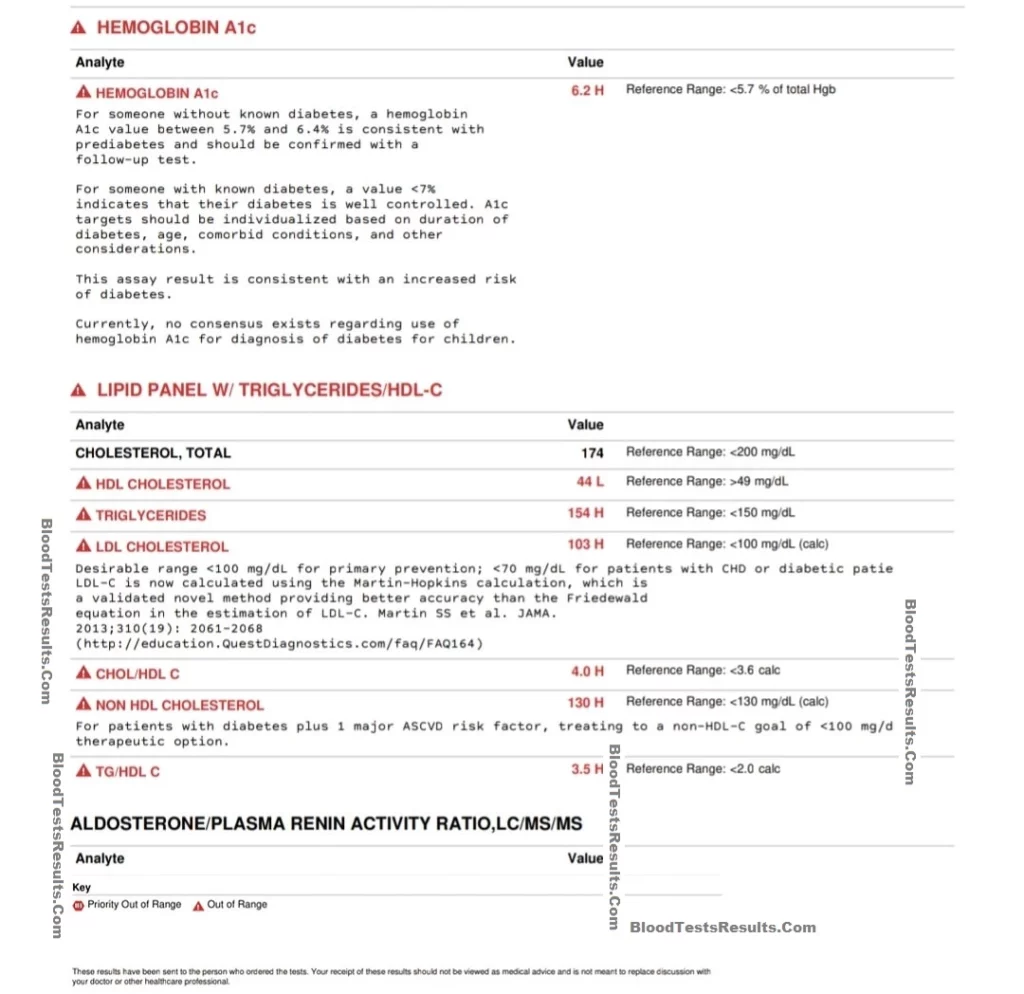
What does the result in red color mean?
Always, the red color means "risk", when the patient's result exceeds the normal nominated limits for a test (either above the high limit or below the low limit), the lab print the result is different color than the rest of the words in the document, usually the red color means abnormal finding that is require attention and treatment.
Some labs print the patient's result on a red bar, also, it means the results is outside the reference range and it's important to understand that well.
I got my lab result shown printed on an orange color bar?
The orange color means that the test result is inside the grey zone or on the borderline levels, that does mean your numbers neither high, nor low, nor normal. Such lab final results need more confirmatory tests, more sensitive, more specific tests or repeating the test again after few days which let the values adjusted and be clearer.
What is meant by the results when written in green color?
Usually the green color means safe, based on that the medical labs use the green color to distinguish the normal findings from other abnormal results, the same as the letter "N", and greenish line, all share the same indication, the normal safe result.
The normal result is a lab finding that is inside the reference range and considered a healthy non-risky level and doesn't require a treatment itself,
however you may have a normal finding in some test and abnormal finding in other tests, therefore the treatment plan or the final diagnosis is based on the whole information gathered from lab findings along with clinical examination and imaging results not based on a single result, so take care of the final interpretation of your lab test results.
For example: having normal random blood glucose value doesn't mean you don't have diabetes, because there're blood test A1C to detect the history of accumulated glucose in the blood and diagnose the diabetes effectively than the RBG test.
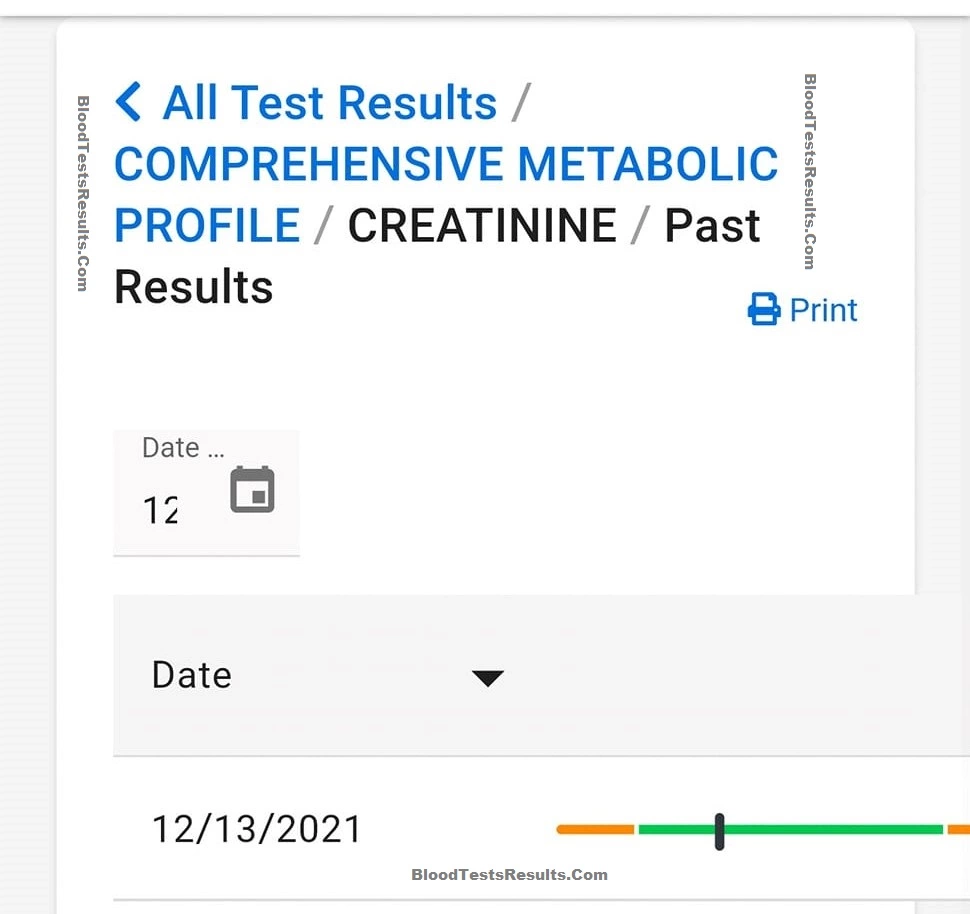
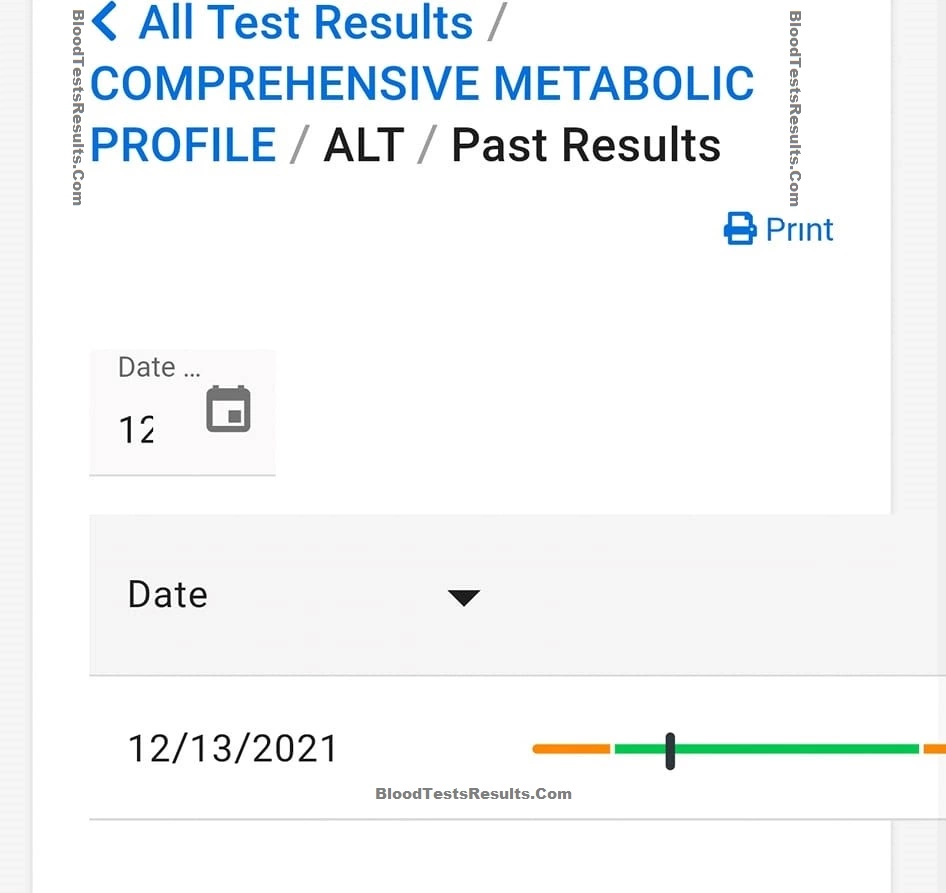
What is meaning of test results that on gray shadow?
One of the simplest methods to differentiate the results that exceed the normal range is to print it on gray color highlight or grey shading the abnormal findings.
What do the letters "A", "H" and "L" on a blood test result stand for?
The Letter "A" stands for the word "abnormal" which means a lab result that is outside the reference ranges either above or below limits. The "H" letter stands for the word "high" which indicate an abnormally elevated lab test result. The "L" letter stands for the word "low" which indicate an abnormally decreased lab result.
Also, the letters may be in the color red or without special color. sometimes arrows or stars and letters added together to emphasize how risky the results are.
Examples: visit, meaning of flag "A", Flag "H" on PLT, Flag "L" on PLT, Flag "C" on results
What do the single arrow and double arrows near the lab results mean?
Promptly, the result with the arrows nearby is generally abnormal or out the common familiar norms, thus the laboratory prints the abnormal sign "arrow" beside the written value in the final result.
However, the single arrow marks the abnormal finding but doesn't tell if it was mild or severe. On the other hand, the double arrows mark a sever abnormal result which requires urgent medical decision.
Double arrows to the downside is similar to the abbreviation "C" which means "very low" but not critical yet, likewise, if the result is printed with double arrow to the above it means that the result is "very high" but not reaches the critical level yet

My lab results got a flag 'Astric' right to the number, is that mean an issue?
A frequent question sent nearly every day to the website and the FB group, simply, the lab prints the sign looks like the star "*" or "#" on your numbers that are not inside the normal reference range, the reason is to highlight the untypical or unexpected findings in the printed lab report. Some labs add two red stars near the abnormal results to indicate it's exceeded the normal range too much.
Therefore, Astric or stars flags mean "an odd results" that come beyond the expected values of the same age and gender, although flags don't always mean a bad situation.
How to distinguish the Abnormal Results from Normal Results on the lab Report?
Normal results written in black color or greenish color, green bar with the value above it or below it, the letter "N", or without any marks or flags. On the other hand, the abnormal results got a flag of many types such as (writing the result in red color with or without stars, arrows, double arrows, or writing results accompanied by one of the letters "H", "L", "A", "C"), shading the abnormal result with a grey color is another way to represent that it's a different than other normal results.
What is meant by "out of range" with exclamation and danger triangle?
The range, means the reference range or the normal nominated range for the same age and gender of you. being out of range or outside the range is referring to abnormal results. Yellowish or reddish exclamation triangle means "warning".
The meaning of flags like "Plus sign and a number"
Flags consists of "number and the sign plus+" means "how much is a quantity while testing for something?"
The Flag "+1" means "Mild or simple amount" or "positive one level or at the first degree", likewise, the "+2" stands for "moderate amount"; "high to the second level"; or "elevated to the second degree", "3+" means "large amount, big amount, a lot of, to the third order, at the third levels, elevated to the third degree, etc"

Examples: on the image you may see "+3" on a result of the quantity of blood in urine which typically means the urine analysis revealed that there's a lot of blood in urine which is abnormal that's why it's flagged. Other labs may write it as "Hematuria 3+"
The same example report shows: the result "protein 1+" which means simple amount or little amount of protein (has the medical term, proteinuria 1+) which is abnormal but mild condition.
The meaning of the signs minus(-) and plus(+)
Minus sign"-" before or after a test result means "Low", while plus sign "+" before or after the results means "High", the same as "H" and "L" abbreviations, the example shown on the image below (the red arrow refer to the minus sign).
Technical Flags: Astrik, Window sign, WL, MP
If you received a copy of your results printed on the instrument's paper like this,
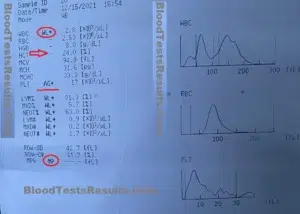
The image show flags on red circles that alert the lab technician that there're something not complete or the procedure background has got some technical errors and he/she must repeat the test or do other maintenance to let the instrument adjusts and fixes the final results next time.
The technical flags such as "WL, MP or *#" appear on the instrument's printout only which must not gave to the patient because it still not final yet. the example above shows a report of the full blood count test from the instrument screen which has many technical flags for the lab technician to deal with such as:
"AG*" flag, abbreviation to the word "Aggregations" which alert the lab technician to do another examination of blood film to confirm either natural decrease of platelets count or the decrease is due to aggregations of platelets which may be due to error in the blood sample itself or due to malfunction in the instrument and needs troubleshooting.
My labs got red symbols, is the flag near the result a bad thing or of good things?
Results that printed in a flagged manner is surely non-typical or outside the reference ranges but it's not always a bad result because the annotation is used for just paying your attention to this different finding. For instance, the annotation on the positive pregnancy test result is to grab your eyes towards the unusual finding but it's a good finding for a female to be pregnant.
When should I worry about Red Flags on my lab results?
All flags are designed to alert that your results are abnormal but only the flag "C" or "double arrows" that mean "extreme abnormal" to a degree of panic, undesirable, worrying or uncommon and must get prompt medical care.
If the result is not highlighted or flagged, it does mean a normal finding, and doesn't mean less important or has no importance, for sure it is important for overall diagnosis but the flags is for just alerting the reader for abnormal results only.
Examples 1:
HbA1c (NGSP) 8.1 H at first, 7.3 H after treatment 6.0 N,(the reference ranges 4.0-6.0 %)
HbA1c (IFCC) 65 H at first, after follow-up and took treatment become 42 N (reference range 20-42 mmol/mol)
Explanation: The patient number is printed in red and followed by the letter "H" to indicate it's outside the expected range and therefore diabetes, while after treatment the result is followed by "N" and printed in ordinary color which means it reaches the target range for the diabetes person.
Example 2:
Haemoglobin test: first visit was 118L, second visit was 132 L, third visit was 146 (normal ranges 135-175 g/L).
Explanation: The final lab report show the hemoglobin result two times elevated so that the numbers is highlighted in reddish color and followed by "L" flag to be understood that it is anemic, but finally the hemoglobin level returns inside the normal levels and the lab printed the result in the ordinary color without flags, signs, or letters to indicate "it's safe level, no medical issue".
Note that in both examples 1,2 the high and low results are highlighted in red color because they both outside the normal levels.
Example 3:
Qualitative pregnancy test (hCG): Positive*
Quantitative BhCG test: H 550 mIU/mL
Explanation: the pregnancy test shows the word Positive which means there're pregnancy, but the quantitative test of the pregnancy hormone revealed that it was 550 followed by "H" which means high quantity of the pregnancy hormone, therefore the flags printed here "H" and "*" pointing to an elevated level in despite of bad or good outcome.
Example 4: Flag H before plt and wbc
Who writing my test results report? Who made the highlighting marks on my labs?
The lab pathologist or specialist is the responsible for writing the final lab document that assess your doctor to indicate the appropriate diagnosis. Interestingly, modern laboratories don't still write on papers, instead they use programmed platforms or medical electronic devices to write the final reports, and those platforms programmed to highlight the abnormal findings according to the recorded reference ranges inside.
Why print results with flags and highlighted marks?
Eliminating the confusion when reading lab results and confirm the abnormal results.
When you open a lab form it may show many numbers, codes, uncommon words or symbols which make you brain stopped and become confused, therefore the colored marks and flags act as pointers on the abnormal findings to erase such confusion and facilitate the reading of the whole report.
Can I ask my doctor for a copy of my blood test results?
It's from your legal rights that allowed by most healthcare providers and medical laboratories to receive a copy of your medical reports and lab results, therefore if you didn't take the by default just ask you healthcare provider who ordered the lab tests for the copies.
Conclusion:
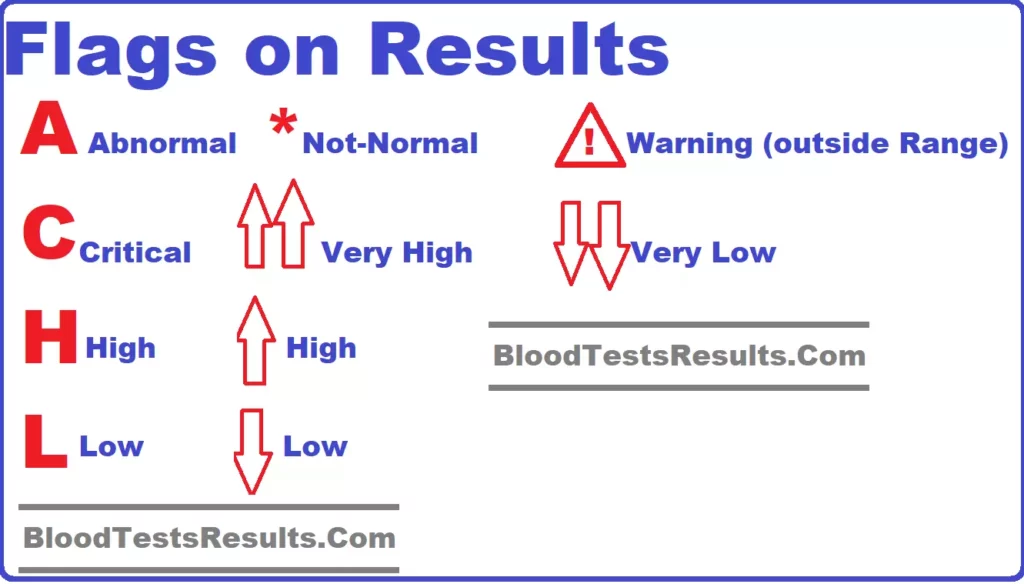
If your blood result has a grey shadow or is surrounded by a mark or a flag (i.e. star, L, H, A, C, arrow) or written in red color, it means that your result exceeded the normal reference range and the lab highlight it because it's "abnormally important", but, if the result is written in the usual color or highlighted by the green color or the results followed by "N" sign, it means normal healthy finding and has no medical issue.
If you still can't decipher your lab results you can post, messaging, or Facebooking with us anytime.
